#saint bernard of clairvaux
Text

Philipp Veit (1793-1877), Fresco cycle in Casa Massimo, Rome The Empyreum (with at the centre Dante being led to the Virgin Mary by St Bernard of Clairvaux) 1817–1827.
#Catholicism#Blessed Virgin Mary#Holy Mother of God#empyreum#dante alighieri#Saint Bernard of Clairvaux#Catholic saints#divina commedia
7 notes
·
View notes
Text
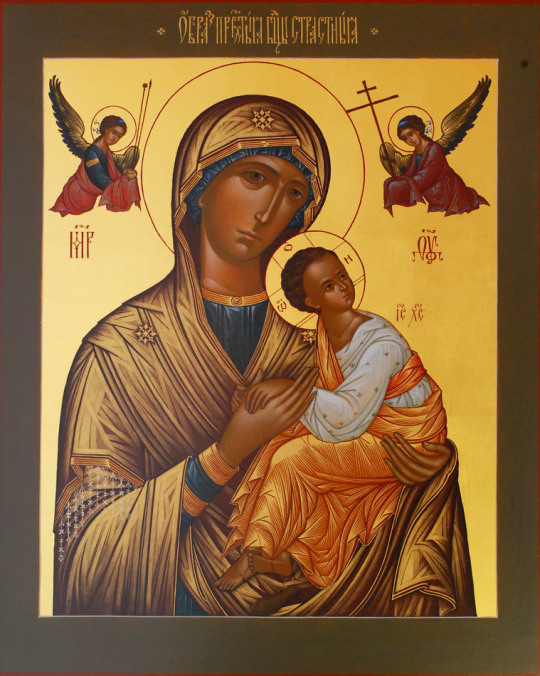
"I say that the Virgin Mary could not be sanctified before Her conception, inasmush as She did not exist. If, all the more, She could not be sanctified in the moment of Her conception by reason of the sin which is inseparable from conception, then it remains to believe that She was sanctified after She was conceived in the womb of Her mother. This sanctification, if it annihilates sins, makes holy Her birth, but not Her conception. No one is given the right to be conceived in sanctity; only the Lord Christ was conceived of the Holy Spirit, and He alone is holy from His very conception. Excluding Him, it is to all descendants of Adam that must be referred that which one of them says of himself, both out of a feeling of humility and in acknowledgement of the truth: "Behold I was conceived in iniquities" (Ps. 50:7). How can one demand that this conception be holy, when it was not the work of the Holy Spirit, not to mention that it came from concupiscence? The Holy Virgin, of course, rejects that glory which, evidently, glorifies sin. She cannot in any way justify a novelty invented in spite of the teaching of the Church, a novelty which is the mother of imprudence, the sister of unbelief, and the daughter of light-mindedness) -- Bernard of Clairvaux, Doctor of the Catholic Church
9 notes
·
View notes
Text

#Saint Bernard of Clairvaux#St. Bernard of Clairvaux#st. bernard#catholic saint quotes#catholic saints#catholic#catholicism#christian quotes#tradcath#saints#jesus christ#god#trad catholic#knowledge#wisdom#purpose#learning#understanding#success#love#curious#curiosity#vanity#thetropics#collegepark
4 notes
·
View notes
Photo
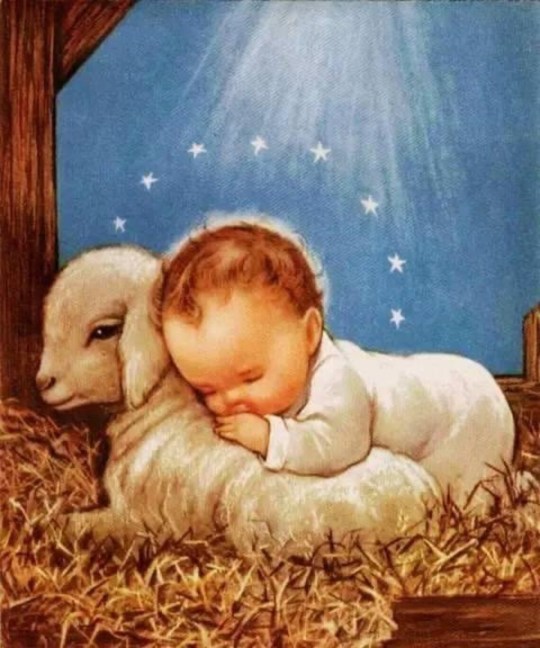
“Let Your goodness Lord appear to us, that we,
made in your image, conform ourselves to it.
In our own strength
we cannot imitate Your majesty, power, and wonder
nor is it fitting for us to try.
But Your mercy reaches from the heavens
through the clouds to the earth below.
You have come to us as a small child,
but you have brought us the greatest of all gifts,
the gift of eternal love
Caress us with Your tiny hands,
embrace us with Your tiny arms
and pierce our hearts with Your soft, sweet cries.”
~Christmas prayer of St. Bernard of Clairvaux
(Art via Etsy)
#Christian art#saints#St. Bernard of Clairvaux#Christmas#Nativity#Christ Child#Lamb of God#greatest gift#eternal love#lord have mercy
35 notes
·
View notes
Text

Saint Bernard of Clairvaux
Abbot and Doctor of the Church
1090 - 1153
Feast day: August 20
Patronage: Cistercians, beekeepers, candlemakers
Born near Dijon in France in 1090, Bernard entered the Cistercian Order at the age of 22; he became the Abbot of Clairvaux. Despite his longing for the solitary contemplative life, he traveled a great deal in France, Germany, and Italy, trying to reconcile the divisions in the Church at the time. He wrote many works on the spiritual life and theology.
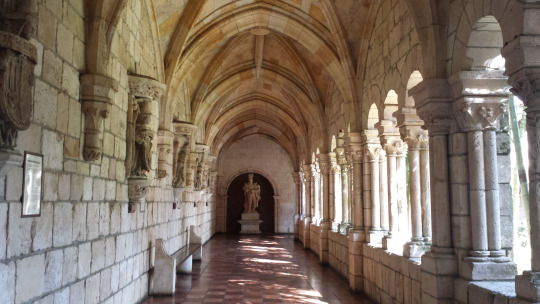
Prints, plaques & holy cards available for purchase here: (website)
39 notes
·
View notes
Text
Parallels of Eve: The Joyful Mysteries
Today, as we celebrate the Feast of Adam and Eve in preparation for the feast of the Nativity tomorrow, just some things to think about concerning the First and New Eves.
1. The Annunciation. In the Garden of Eden, Eve is approached by an angel who tempts her into sin. The angel promises that she will be like God, only to become isolated from Him. Thus, with her cooperation, "sin entered the world through one man" (Romans 5:12). At the Annunciation, Mary is approached by an angel who declares to her God's plan, and all of creation awaits her response. Mary will "breathe a passing word, [and] embrace the eternal Word" (St. Bernard). Thus, with her cooperation, "abundance of grace and of the gift of justification come to reign in life through the one person, Jesus Christ" (Romans 5:17).
2. The Visitation. According to one Rabbinic legend, the Fall causes Adam and Eve to temporarily separate from one another. This brokenness in their relationship is only fixed when Eve, who was pregnant at the time of their separation, begins to give birth; her cries of pain bring Adam back, and they reconcile after the birth of Cain. The shared pregnancies of Mary and Elizabeth also bring a family closer together, but without a preceding disruption of family life caused by sin.
3. The Nativity. Eve gives birth to a firstborn boy, naming him Cain, "for I have produced a male child with the help of the Lord" (Genesis 4:1). Mary likewise gives birth to a firstborn boy with the help of the Lord, for the Holy Spirit came upon her and the power of the Most High overshadowed her (Luke 1:35). In this, Eve is the mother of all the living (Genesis 3:20), because through her biological lineage all humans are born. In this, Mary is the mother of the re-created world (St. Anselm), because it is by being incorporated into the Body of her Son that "we live and move and have our being" (Acts 17:28).
4. The Presentation. Through the Fall, Adam and Eve lose the riches of the Lord that they had in Paradise; "by the sweat of [his] brow" will Adam eat his bread; God tells him, "the ground is cursed because of you! In toil you shall eat its yield" (Genesis 3:19, 17). Joseph likewise toils for his bread, and he is a poor man; at the presentation of Jesus at the Temple, he sacrifices two turtles doves (Luke 2:24), which is the alternative sacrifice for a poor man who cannot afford a lamb (Leviticus 12:6-8). There is an important difference, though; for Adam, death is prescribed "as a remedy. Human life was condemned because of sin to unremitting labor and unbearable sorrow [...] there had to be a limit to its evils" (St. Ambrose). This physical and spiritual poverty will not last, now; by being born as a human into Joseph's family, "for your sake [Jesus] became poor although He was rich, so that by His poverty you may become rich" (2 Corinthians 8:9).
5. Finding Jesus in the Temple. Adam and Eve lose a son to a violent death, and in doing so actually lose two sons; Abel is killed, lost to Adam and Eve in the world of the living forever. Cain is alienated from his family, for he has committed the very first murder, and Cain is concerned by the anger of his family: "Anyone may kill me on sight" (Genesis 4:14). A family is fractured beyond repair, at least in this life. Mary and Joseph also lose a Son, but it is a temporary situation; they find Jesus at the Temple, the very home of God, the same God that Adam and Eve hid from and Cain lied to. After finding Jesus, Mary ponders what has occurred in her heart, while Jesus remains obedient to them (Luke 2:51); the temporary loss only serves to strengthen family bonds.
#Christianity#Catholicism#Adam and Eve#Virgin Mary#Rosary#Joyful Mysteries#Jesus Christ#Cain and Abel#The Annunciation#The Visitation#Nativity#Bernard of Clairvaux#Saint Ambrose of Milan#Anselm of Canterbury
60 notes
·
View notes
Text
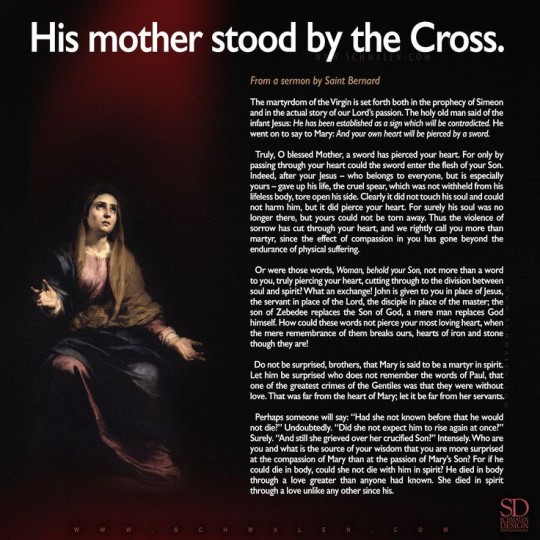
#traditional catholicism#traditional catholic images#traditional catholic saints#traditional catholic father's and doctors of the church#st. bernard of clairvaux
34 notes
·
View notes
Text

Saint Bernard preaching the Second Crusade before King Louis VII, his queen Eleanor of Aquitaine, and Abbot Suger, at Vézelay in Burgundy, 31 March, 1146
by Émile Signol
James Meeker Ludlow describes the scene romantically in his book The Age of the Crusades:
A large platform was erected on a hill outside the city. King and monk stood together, representing the combined will of earth and heaven. The enthusiasm of the assembly of Clermont in 1095, when Peter the Hermit and Urban II launched the first crusade, was matched by the holy fervor inspired by Bernard as he cried, "O ye who listen to me! Hasten to appease the anger of heaven, but no longer implore its goodness by vain complaints. Clothe yourselves in sackcloth, but also cover yourselves with your impenetrable bucklers. The din of arms, the danger, the labors, the fatigues of war, are the penances that God now imposes upon you. Hasten then to expiate your sins by victories over the Infidels, and let the deliverance of the holy places be the reward of your repentance." As in the olden scene, the cry "Deus vult! Deus vult! " rolled over the fields, and was echoed by the voice of the orator: "Cursed be he who does not stain his sword with blood."
#second crusade#medieval#bernard of clairvaux#st bernard#saint bernard#knights#vézelay#burgundy#france#french#art#émile signol#history#christianity#christian#europe#european#middle ages#knights templars#crusades#crusaders#crusade#king of france#eleanor of aquitaine#king louis vii
58 notes
·
View notes
Photo
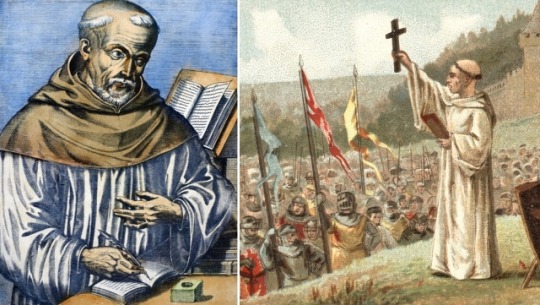
20 août 1153 : mort de saint Bernard de Clairvaux, promoteur de l’ordre cistercien ➽ http://bit.ly/Bernard-Clairvaux Fondateur de l’abbaye de Clairvaux, laissant 160 monastères dans diverses contrées de l’Europe et de l’Asie, saint Bernard, dont l’intelligence allait droit au coeur des doctrines et des choses, exerça sur ses contemporains une influence étendue et profonde, et fut un important promoteur de l’ordre de Cîteaux
#CeJourLà#20Août#Clairvaux#Saint#Bernard#Abbaye#Monastère#Aube#Ordre#Cistercien#Cîteaux#Doctrine#Religion#Croisade#Biographie#histoire#france#history#passé#past#français#french#news#événement#newsfromthepast
8 notes
·
View notes
Text

Saint Bernard of Clairvaux
Add MS 35313 f.228v
Source: British Library
#medieval#medieval manuscripts#illuminated manuscript#cloistercore#medieval monk#medieval core#middle ages#st bernard#bernard of clairvaux#medieval monks#saint
13 notes
·
View notes
Text


About St Catherine of Siena
About St Bernard of Clairvaux
Post-Schism Bracket Round 1
#st catherine of siena#st bernard of clairvaux#catholic saint tournament#tumblr bracket#tumblr tournament#christianity#polls#tumblr polls#theology#catholic saints#catholicism#catholic
16 notes
·
View notes
Text
Brian Patrick McGuire in his book "The Difficult Saint" (1991) characterized Bernard of Clairvaux as "a mysterious combination of affection and hostility" (p. 38) and if this is not the best description of Bernard's personality, then I don't know what is.
8 notes
·
View notes
Text

"You will say, 'One must glorify the Mother of God as much as possible.' This is true; but the glorification given to the Queen of Heaven demands discernment. This Royal Virgin does not have need of false glorifications, possessing as She does true crowns of glory and signs of dignity. Glorify the purity of Her flesh and the sanctity of Her life. Marvel at the abundance of the gifts of this Virgin; venerate Her Divine Son; exalt Her Who conceived without knowing concupiscence and gave birth without knowing pain. But what does one yet need to add to these dignities?" - Bernard of Clairvaux
1 note
·
View note
Text

#Saint Bernard of Clairvaux#St. Bernard of Clairvaux#st. bernard#catholic saint quotes#catholic saints#catholic#catholicism#christian quotes#tradcath#saints#jesus christ#god#trad catholic#jesusiseverything#seek jesus#jesusiscoming#faith in jesus#christ#gospel#bible#discipleship
3 notes
·
View notes
Photo

"The greatness of each soul is judged by the measure of love that it has: he who has great love is great,
he who has little love is little, while he who has no love at all is nothing.”
~St. Bernard of Clairvaux
(Image via atelier-st-andre.net)
27 notes
·
View notes
Text
SAINT OF THE DAY (August 20)

On August 20, the Church celebrates the feast day of St. Bernard of Clairvaux, a Doctor of the Church — thanks to his writings and sermons, which greatly influenced Europe during the 12th century, and his numerous efforts, which helped to avoid a schism in the Church in 1130.
He was the co-founder of the Knights Templar and a major leader in the reformation of the Benedictine Order through the nascent Cistercian Order.
Born in 1090, Bernard spent his early years near Dijon, France, before leaving to joining the Cistercians at the age of 22.
He was well educated and so passionate about his faith that he convinced his brothers, his uncle, and many of his friends to join him at the abbey.
Bernard first entered the abbey at Citeaux. Three years later, he was sent with 12 other monks to establish another monastery in the Diocese of Champagne.
The monastery came to be known Clairvaux (Valley of Light). He led the other monks there as the abbot for the rest of his life.
St. Bernard knew how to harmonize the contemplative life with important missionary work, as the Pope noted in 2006.
However, the saint’s strict observance of silence and contemplation did not impede him from living a very intense apostolic life.
His humility and his commitment to tame his impetuous temperament were exemplary, he said.
The Pope also highlighted the saint’s focus on the truth that God, who is love, created mankind out of love and that man’s salvation consists of adhering firmly to Divine love, revealed through the crucified and risen Christ.
“The richness of St. Bernard’s preaching and his theology were not in pursuing new paths,” the Pope said, “but in succeeding to propose the truth of the faith in a clear and incisive way so as to fascinate the listener and lead the person to prayer.”
St. Bernard is also well-known for his Marian devotion, especially in using and promoting the "Memorare" prayer.
He became widely known throughout Europe and was consulted by Popes and political leaders.
He died on 20 August 1153.
He was canonized less than three decades later on 18 January 1174 by Pope Alexander III.
In August 2008, Pope Benedict XVI spoke of the saint during his weekly general audience.
He recalled that Pope Pius VIII labeled the “Honey-Sweet Doctor” for his eloquence and that he traveled throughout Europe defending the Christian faith.
Benedict XVI added:
“He was also remembered as a Doctor of Mariology, not because he wrote extensively on Our Lady, but because he understood her essential role in the Church, presenting her as the perfect model of the monastic life and of every other form of the Christian life.”
#Saint of the Day#St. Bernard of Clairvaux#Knights Templar#Benedictine Order#Cistercian Order#Memorare prayer
3 notes
·
View notes